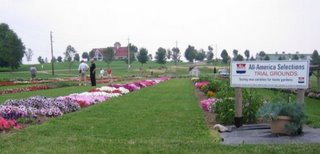Turf Nirvana
I know weather has been quite variable across the province, but right now in my neck of the woods it is a lawn jockey's paradise. The heat and the moisture have made the grass grow almost too fast but it is green, lush and beautiful. I am on heavier, clay loam soils and it has been almost too wet at times. The heat and humidity can bring on some patch diseases, particularly on lawns that have been well fertilized. Another good reason to pay careful attention to the amount of fertlizer you apply and when you apply it. Diseases are typically not treated on home lawns. If there are areas of your lawn that are prone to diseases, it usually means poor drainage, lack of light and air circulation or a susceptible grass. Improving growing conditions or overseeding with a more suitable grass species is the best solution.
Adult European chafers have flown, mated and laid their eggs which are hatching and producing little root gnawing larvae. If growing conditions are good, the lawn can often outgrow the feeding damage. However, as the larvae grow larger and if conditions limit grass growth, feeding can outpace plant growth and result in damage. Treatment is warranted if you have areas with a history of grub damage - often areas downwind of large trees or structures where the flying adults mate. Treatment options include parasitic nematodes which are becoming more readily from local garden centres. Good moisture from natural rains or irrigation is essential to insure the nematodes can attack the grubs. Professional lawn care companies can offer other control options. A more passive approach is to wait until damage is evident next spring, then rake off the dead plant material and sod or overseed with a fast germinating turf species like perennial ryegrass.
We have been conducting a long term demonstration project of various lawn management regimes, including conventional premium lawn care programs, an Integrated Pest Management approach where pests are monitored and treated only when needed as well as a pesticide-free program using alternative pest management methods. Superimposed on the study are fertility or no-fertility, irrigation or no-irrigation and two mowing heights.
Unfortunately we have not encountered any significant insect problems in any of the study areas. It is becoming evident in this study that proper fertility has the greatest effect on weed infestation, greater than either irrigation or mowing height. If you are interested in more details on this study including a description of the maintenance techniques used, follow this link.

A Public Open House at the Guelph Turfgrass Institute Annual Trial Gardens is scheduled for August 17th from noon to 8 pm. If you are in the Guelph area and are interested in checking out the latest annual flower varieties as well as taking a look at the research facility including the lawn care demonstration plot described above, please drop by. Guelph & Wellington County Master Gardeners will be there with practical gardening advice. Directions can be found by following this link.
I hope you are having a great summer.
